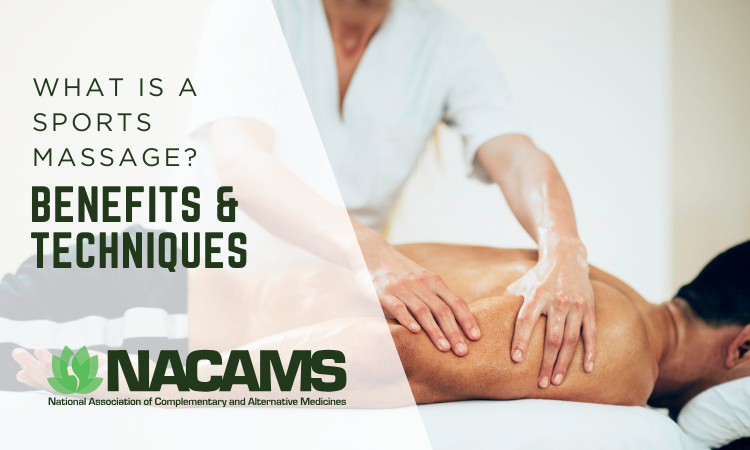
If you’re a wellness professional looking to add sports massage to your toolkit, you’re probably wondering: What is a sports massage, exactly? Simply put, it’s a type of massage designed to help active people recover faster and perform better. It can even help them avoid injuries.
A sports massage isn’t your typical spa massage focused only on relaxation. It targets specific muscles and tissues that get worked harder during physical activity. Knowing how to offer sports massage adds real value to your practice, but it also comes with responsibilities that every professional should be aware of.How Sports Massage Differs From Other Types
People often imagine a relaxing massage with long strokes that help them relieve stress when they think of massage. but that’s usually a Swedish massage.
A sports massage doesn't focus on relaxation. It zeroes in on areas of the body that need attention. It works more deeply on the muscles that experience more strain during physical activity. This makes it a great fit for anyone who moves a lot, whether they’re training seriously or just staying active.
With sports massage, the pressure is often firmer, so the experience might not always feel as relaxing as other types of massage. That’s because it works deep into the muscles to help them heal and perform, which means some parts of the session can feel a little intense.
Benefits for Wellness Professionals and Their Clients
Adding sports massage to your skill set gives you more ways to support your clients’ goals. For your clients, it usually means:
Better recovery after workouts
Less muscle soreness
Improved flexibility and range of motion
These benefits help them move more comfortably and perform at their best. Sports massage can also help prevent injuries. It does this by releasing tight muscles and improving circulation, both of which help keep the body balanced and resilient.
For you as a wellness professional, offering sports massage shows your commitment to your clients’ well-being beyond the usual training sessions. It’s a practical way to help them feel better and build trust. Plus, it gives you an edge by expanding what you can offer. This way, it makes your practice more attractive to people looking for comprehensive support.
Types of Sports Massage
Sports massage isn’t one-size-fits-all. Different types target different needs, depending on where your clients are in their training or recovery.
Pre-Event Massage: The pre-event massage helps get your clients ready to move. It warms up muscles and boosts blood flow so they can perform at their best and avoid injuries.
Post-Event or Recovery Massage: After a tough workout or event, this massage helps ease soreness and flush out built-up toxins. It speeds up recovery so your clients can jump back into training faster.
Maintenance Massage: Think of a maintenance massage as regular tune-ups for the muscles. It keeps muscles flexible and balanced, which helps prevent tight spots and strains before they start causing trouble.
Rehabilitative Massage: This type of massage is best for someone dealing with an injury. It targets scar tissue, improves movement, and helps damaged muscles heal properly.
Common Techniques Used in Sports Massage
In addition to basic supplies, you’ll use a mix of techniques to work on muscles and soft tissues in different ways during sports massage.
Effleurage: This technique involves long strokes to warm up the muscles and increase circulation.
Petrissage: With this method, you knead and roll the muscles to release tension and encourage blood flow.
Friction: You might also apply deeper pressure on certain parts to break down knots or scar tissue.
Compression: This technique involves pressing firmly on muscles or trigger points to ease tightness.
Stretching: This involves gently moving your client's hands, legs, or other body parts into a stretch. The client also participates by engaging muscles during the stretch. This technique helps lengthen muscles and improve the range of motion.
Some practitioners also include techniques like trigger-point therapy and myofascial release to target specific spots where tension builds up.
Why Liability Insurance Matters for Sports Massage Professionals
If you plan to include sports massage in your practice, it’s important to think about liability insurance. Because you work closely with clients’ muscles and bodies (sometimes applying firm pressure), there’s always a chance of accidental injury or discomfort.
That’s why having liability insurance is super important. It protects you if a client claims you caused harm or didn’t provide proper care. With NACAMS Sports Massage Insurance, you get coverage for legal costs and claims, so you can give your clients your best without worrying about what-ifs.
Protect Your Practice With Sports Massage Insurance
Adding sports massage to your services can really set you apart as a wellness professional. It helps your clients perform better, recover faster, and stay injury-free, but along with these benefits comes responsibility.
That’s why protecting yourself with liability insurance is so important. A NACAMS policy is designed to give you the coverage you need, whether you work in a studio, gym, or on the go. Plus, it follows you wherever your practice takes you across all 50 states.
Get covered today and focus on what matters most: helping your clients thrive with confidence and peace of mind.
Download A Free 7-Daily Meditation Journal

Protect Your Career With NACAMS Liability Insurance
1 Year Professional
$179/YR
- 5 Minute Online Checkout with Instant Coverage
- Occurrence Form- Industry Preferred Protection
- Dual Specialists Fully Covered Under One Policy
2 Year Professional
$329/YR
(save $29)
- 5 Minute Online Checkout with Instant Coverage
- Occurrence Form- Industry Preferred Protection
- Dual Specialists Fully Covered Under One Policy
More Articles
Page [tcb_pagination_current_page] of [tcb_pagination_total_pages]